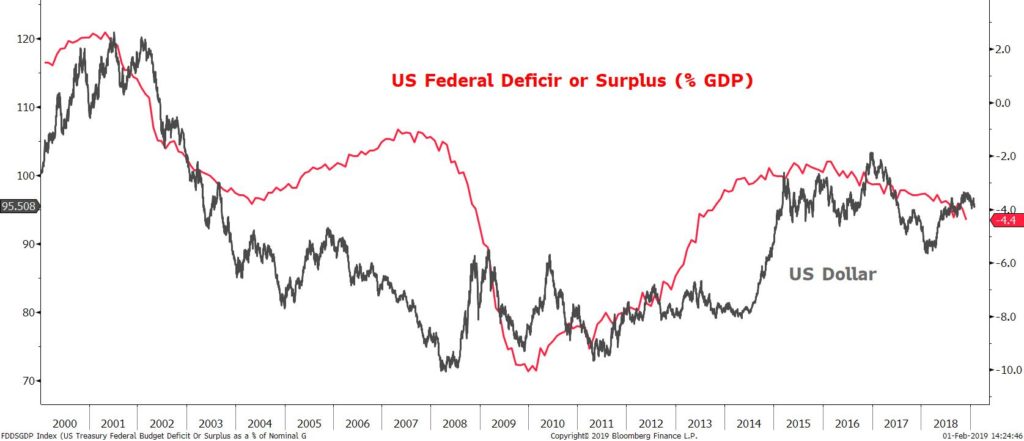
Date: 7 February, 2019 - Blog
As widely expected, the Fed did not raise its Fed Fund rates. The FOMC confirmed the early January Powell comments and stated that it can afford to be patient in raising them. The Fed is waiting to see better global data, a robust improvement in risk sentiment and higher inflation. So, it switches off its autopilot mode.
The Fed is now evaluating the balance sheet run-off. It seems ready to end its balance sheet shrinking sooner rather than later. As we highlighted some months ago, the Quantitative Tightening will end this year, perhaps by reducing the selling pace soon. It confirmed that the appropriate balance sheet size is larger than initially expected. Last year, most of the Fed members expected it to be around $2.5-3.0trn. Now, the consensus has moved closer to our own target, around $3.5trn. An announcement could come as early as the March meeting, or otherwise in May.
This also suggests that halting the balance sheet shrinking will be implemented before any rate cut. All in all, the changes show that the Fed seems ready to react quickly and sharply to negative shocks and implement easing measures to prevent a significant growth slowdown. The Fed is making a pause in H1 and will try to raise rates again at some point in H2, if no material shock materializes.
The market welcomed the dovish signals, sending the EUR/USD and Emerging currencies higher. The message cements the sense of a Fed on hold for some months at least, which is key.
The market would now be focusing on fundamentals ahead of the debt ceiling talks. The US federal deficit will drive the USD. This means that the USD carry momentum is fading, notwithstanding a few more hikes down the road. The USD is vulnerable to such a shift as the positioning is still stretched on USD longs.
- The Powell comments were dovish
- The Fed will end its hiking cycle this year







